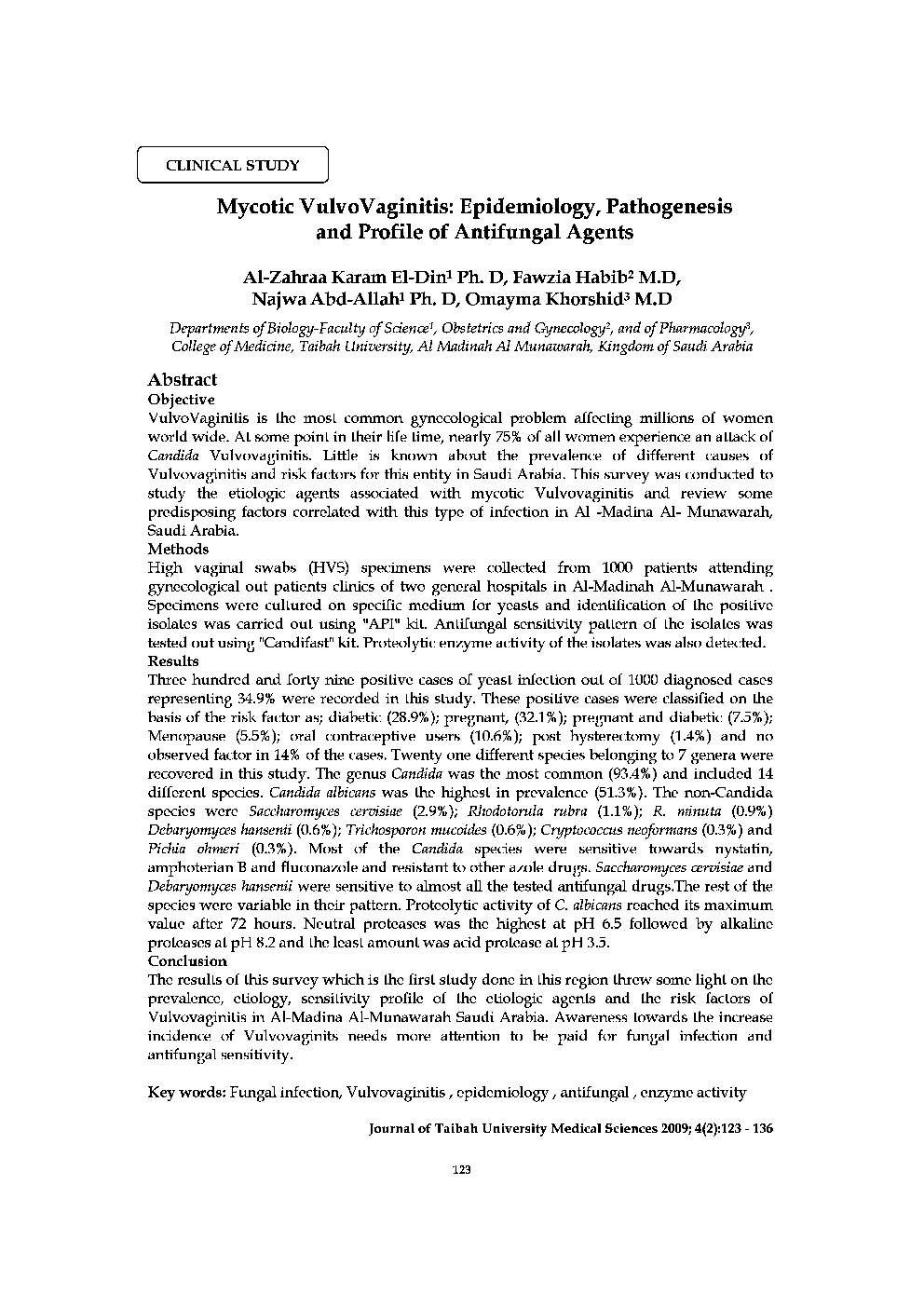| Article ID | Journal | Published Year | Pages | File Type |
|---|---|---|---|---|
| 3484697 | Journal of Taibah University Medical Sciences | 2009 | 14 Pages |
ObjectiveVulvoVaginitis is the most common gynecological problem affecting millions of women world wide. At some point in their life time, nearly 75% of all women experience an attack of Candida Vulvovaginitis. Little is known about the prevalence of different causes of Vulvovaginitis and risk factors for this entity in Saudi Arabia. This survey was conducted to study the etiologic agents associated with mycotic Vulvovaginitis and review some predisposing factors correlated with this type of infection in Al-Madina Al-Munawarah, Saudi Arabia.MethodsHigh vaginal swabs (HVS) specimens were collected from 1000 patients attending gynecological out patients clinics of two general hospitals in Al-Madinah Al-Munawarah. Specimens were cultured on specific medium for yeasts and identification of the positive isolates was carried out using” API” kit. Antifungal sensitivity pattern of the isolates was tested out using” Candifast” kit. Proteolytic enzyme activity of the isolates was also detected.ResultsThree hundred and forty nine positive cases of yeast infection out of 1000 diagnosed cases representing 34.9% were recorded in this study. These positive cases were classified on the basis of the risk factor as; diabetic (28.9%); pregnant, (32.1%); pregnant and diabetic (7.5%); Menopause (5.5%); oral contraceptive users (10.6%); post hysterectomy (1.4%) and no observed factor in 14% of the cases. Twenty one different species belonging to 7 genera were recovered in this study. The genus Candida was the most common (93.4%) and included 14 different species. Candida albicans was the highest in prevalence (51.3%). The non-Candida species were Saccharomyces cervisiae (2.9%); Rhodotorula rubra (1.1%); R. minuta (0.9%) Debaryomyces hansenii (0.6%); Trichosporon mucoides (0.6%); Cryptococcus neoformans (0.3%) and Picm’a ohmeri (0.3%). Most of the Candida species were sensitive towards nystatin, amphoterian B and fluconazole and resistant to other azole drugs. Saccharomyces cervisiae and Debaryomyces hansenii were sensitive to almost all the tested antifungal drugs.The rest of the species were variable in their pattern. Proteolytic activity of C. albicans reached its maximum value after 72 hours. Neutral proteases was the highest at pH 6.5 followed by alkaline proteases at pH 8.2 and the least amount was acid protease at pH 3.5.ConclusionThe results of this survey which is the first study done in this region threw some light on the prevalence, etiology, sensitivity profile of the etiologic agents and the risk factors of Vulvovaginitis in Al-Madina Al-Munawarah Saudi Arabia. Awareness towards the increase incidence of Vulvovaginits needs more attention to be paid for fungal infection and antifungal sensitivity.
